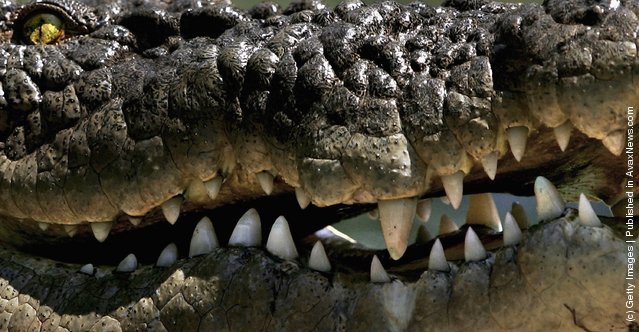
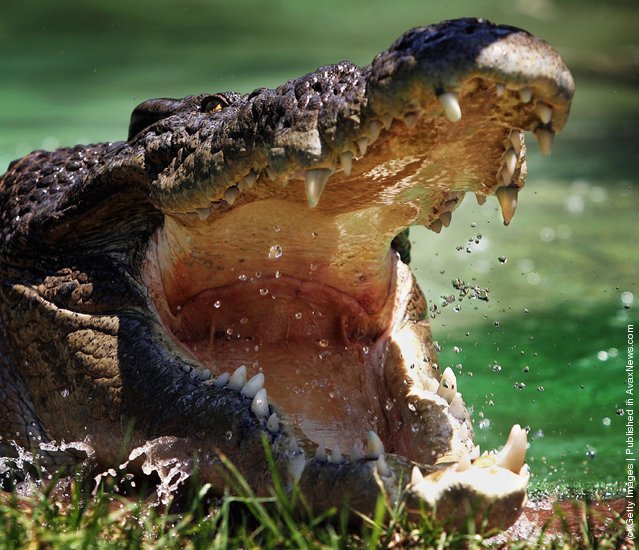
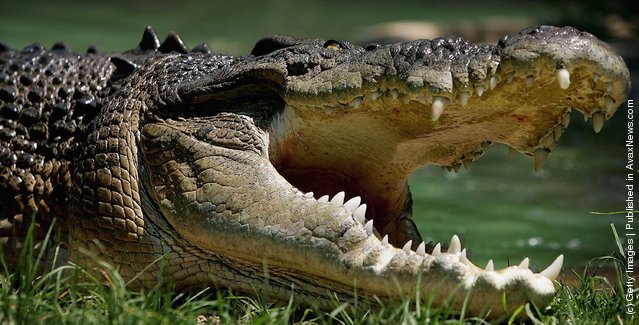
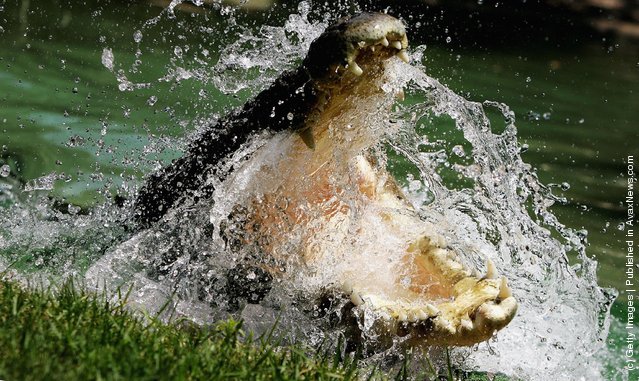
A Saltwater Crocodile is pictured at the Australian Reptile Park January 23, 2006 in Sydney, Australia. The Saltwater Crocodile, the world's largest reptile, is one of Australia's deadliest animals, and the continent's only wild animal that actively hunts human beings which stray into it's territory. Australia is home to some of the most deadly and poisonous animals on earth. (Photo by Ian Waldie/Getty Images)

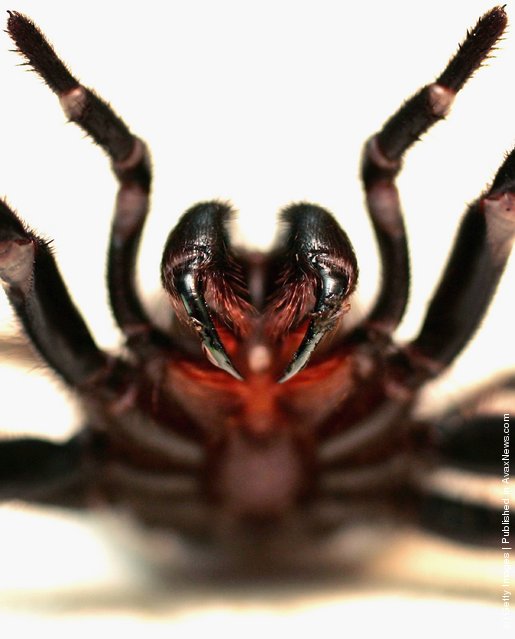
A Funnel Web spider is pictured at the Australian Reptile Park January 23, 2006 in Sydney, Australia. The Funnel Web is one of Australia's deadliest animals, with a venom that is packed with at least 40 different toxic proteins. A bite from a Funnel Web causes massive electrical over-load in the body's nervous system. Finally, fatalities occur from either heart attack or a pulmonary oedema, where the capillaries around the lungs begin to leak fluid and the patient effectively drowns. Death can come as quickly as two hours after a bite if no medical treatment is sought. Due to advances in anti-venom, there has been no death from a Funnel Web bite in Australia since 1980. (Photo by Ian Waldie/Getty Images)
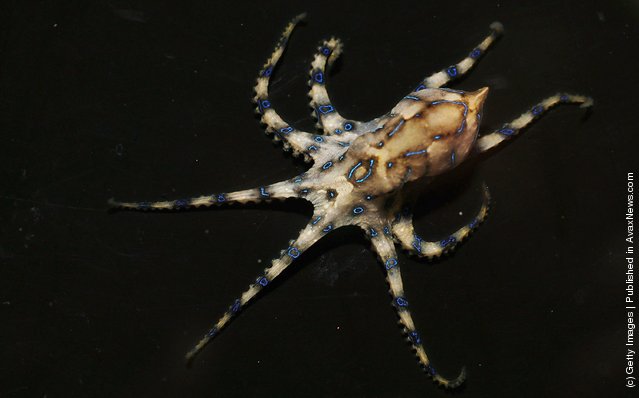
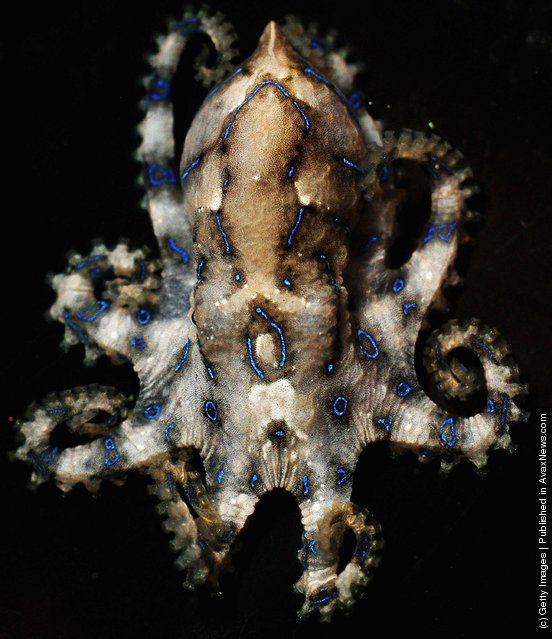
A Blue Ring Octopus is pictured at Oceanworld Aquarium January 24, 2006 in Sydney, Australia. This Octopus has venom called cephalotoxin, and is composed from enzymes in the salivary gland in its mouth. The venom is a neuromuscular paralysing toxin, where nerve conduction in the victim is blocked, followed by paralysis, then death if no medical treatment is sought. Often the bite is painless, and therefore goes unnoticed. The Blue Ring Octopus is so named because of its iridescent blue rings, indicating its deadly nature to predators. (Photo by Ian Waldie/Getty Images)
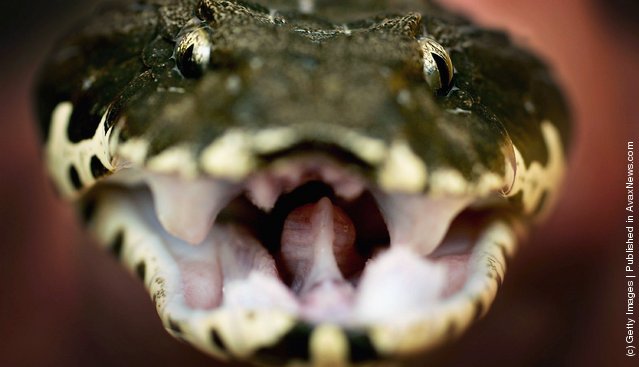
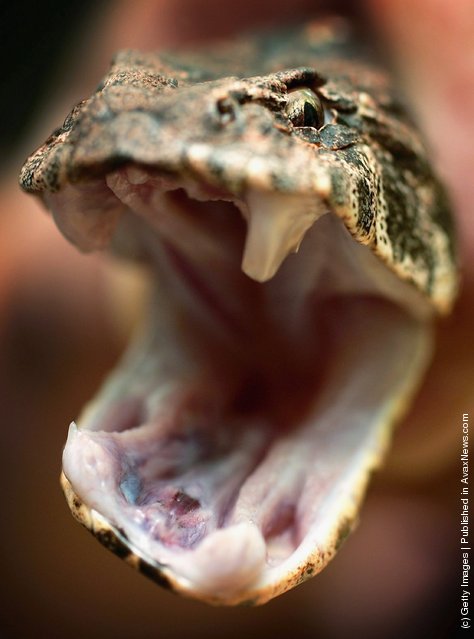
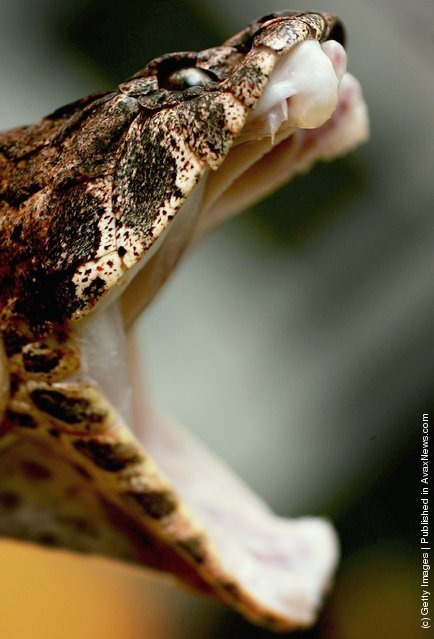
A Death Adder snake is pictured at the Australian Reptile Park January 23, 2006 in Sydney, Australia. The Death Adder is one of Australia's deadliest snakes, with a bite and envenomation producing symptoms such as neuromuscular paralysis, disruption of equilibrium, sweating, and death from respiratory failure if no medical attention is sought. Death from a complete respiratory shutdown can occur in as little as six hours. The symptoms of the venom can be treated with Death Adder Anti Venom, which reverses the effects. (Photo by Ian Waldie/Getty Images)
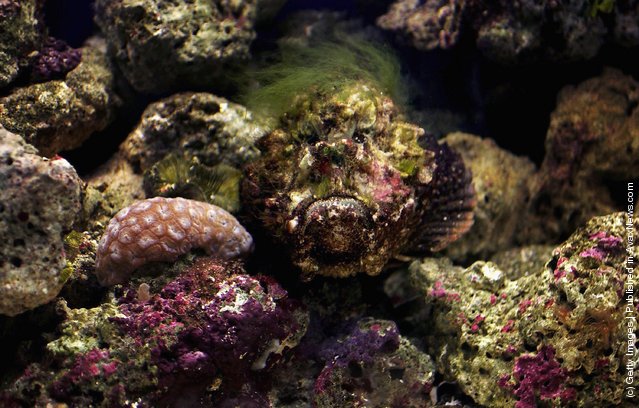
A Stonefish (centre) is pictured at Oceanworld Aquarium January 24, 2006 in Sydney, Australia. The Stonefish is well camouflaged in the ocean, as it is a brownish colour, and often resembles a rock. It has thirteen sharp dorsal spines on its back, which each have extremely toxic venom, which can cause extreme local pain and tissue damage, respiratory distress, which can lead to cardiovascular shock that can be fatal if no medical treatment is sought. There have been no recorded human deaths in Australia due to the development of an antivenin in 1959. (Photo by Ian Waldie/Getty Images)
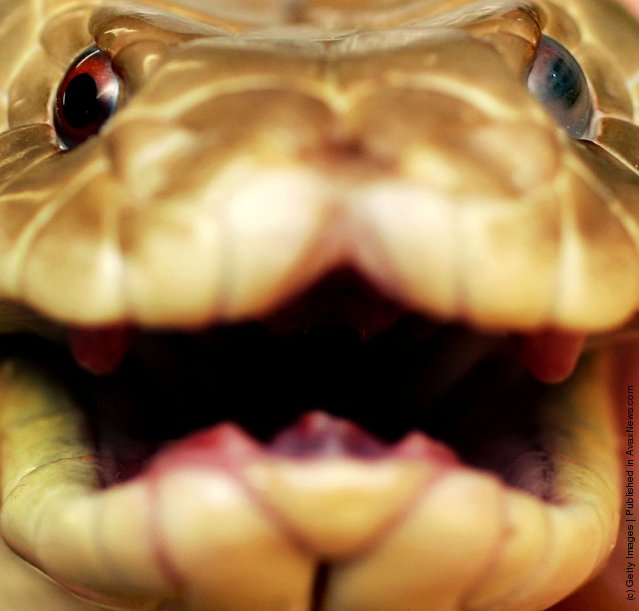
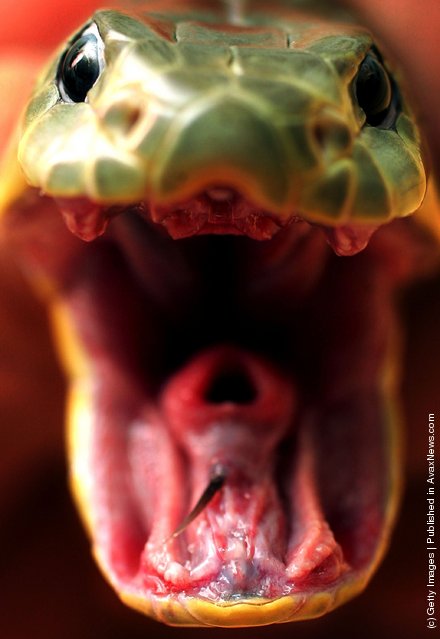
A King Brown snake is pictured at the Australian Reptile Park January 23, 2006 in Sydney, Australia. The King Brown is one of Australia's deadliest snakes, and causes more snakebite deaths in Australia than any other. Its venom causes severe coagulation disturbances, neurotoxicity, and occasionally nephrotoxicity if no medical attention is sought. Australia has six out of the top ten deadliest snakes in the world. (Photo by Ian Waldie/Getty Images)
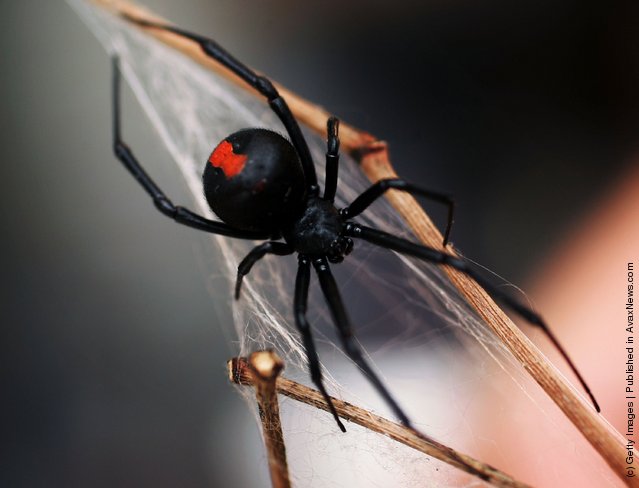
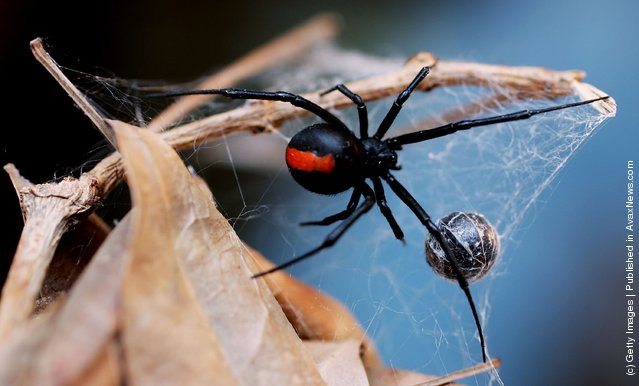
A Redback Spider is pictured at the Australian Reptile Park January 23, 2006 in Sydney, Australia. The Redback, probably Australia's best-known deadly spider is found all over Australia and is a close relative of the Black Widow Spider from the U.S. Only the female Redback is considered dangerous, with their venom containing neurotoxins, which works very slowly. Fatalities, even from untreated bites, are rare. Australia is home to some of the most deadly and poisonous animals on earth. (Photo by Ian Waldie/Getty Images)
25 Apr 2011 07:49:00,
post received
0 comments
